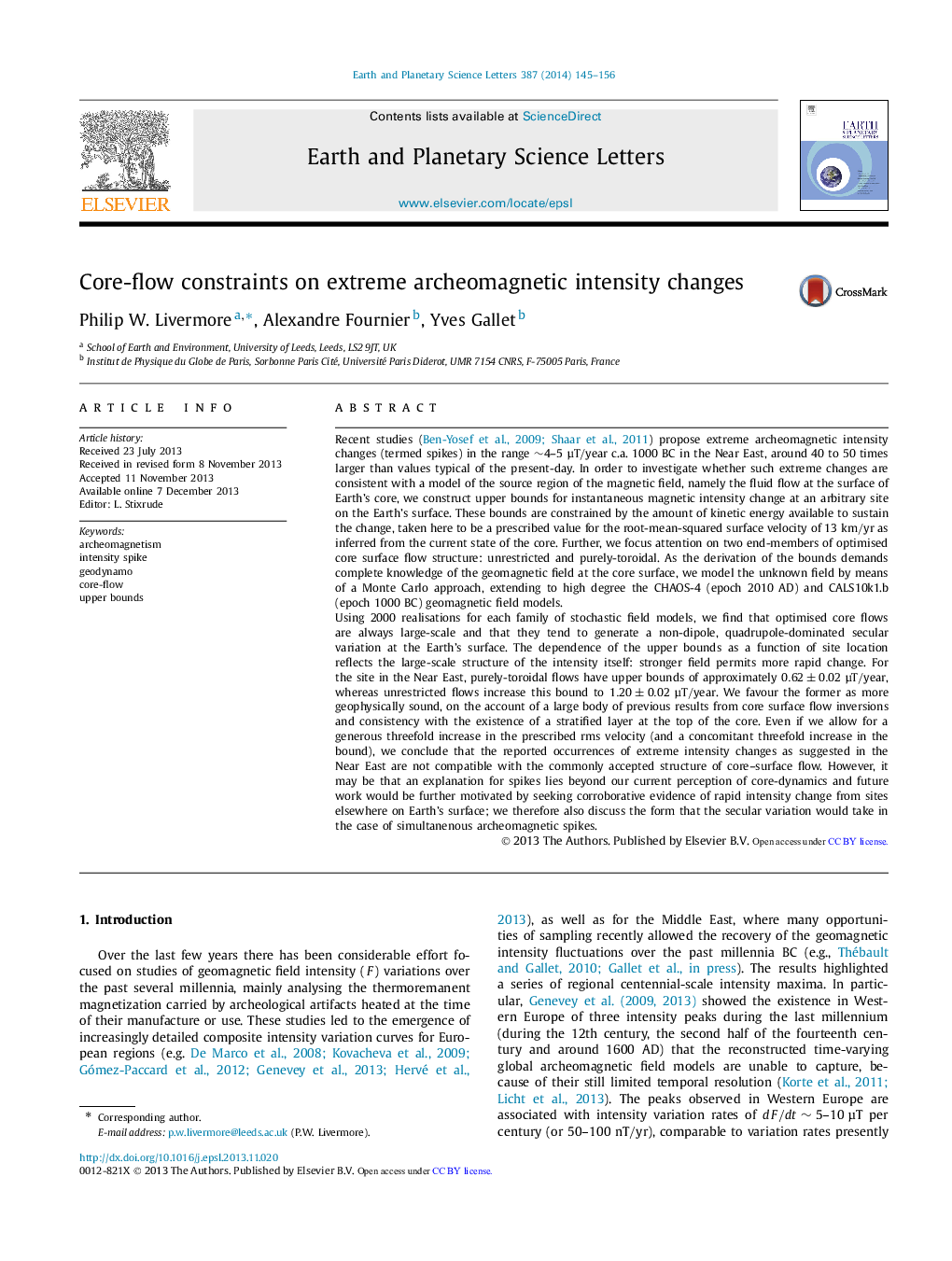| کد مقاله | کد نشریه | سال انتشار | مقاله انگلیسی | نسخه تمام متن |
|---|---|---|---|---|
| 6429651 | 1634769 | 2014 | 12 صفحه PDF | دانلود رایگان |
- We test whether the geodynamo can support extreme intensity variation rates (spikes).
- Our optimisation approach uses unrestricted and purely-toroidal core-flow patterns.
- A stochastic approach further allows one to assess the magnetic field around 1000 BC.
- Optimized flows are large-scale and generate quadrupole-dominated secular variation.
- Suggested spikes â¼1000 BC are incompatible with our understanding of core processes.
Recent studies (Ben-Yosef et al., 2009; Shaar et al., 2011) propose extreme archeomagnetic intensity changes (termed spikes) in the range â¼4-5μT/year c.a. 1000 BC in the Near East, around 40 to 50 times larger than values typical of the present-day. In order to investigate whether such extreme changes are consistent with a model of the source region of the magnetic field, namely the fluid flow at the surface of Earth's core, we construct upper bounds for instantaneous magnetic intensity change at an arbitrary site on the Earth's surface. These bounds are constrained by the amount of kinetic energy available to sustain the change, taken here to be a prescribed value for the root-mean-squared surface velocity of 13 km/yr as inferred from the current state of the core. Further, we focus attention on two end-members of optimised core surface flow structure: unrestricted and purely-toroidal. As the derivation of the bounds demands complete knowledge of the geomagnetic field at the core surface, we model the unknown field by means of a Monte Carlo approach, extending to high degree the CHAOS-4 (epoch 2010 AD) and CALS10k1.b (epoch 1000 BC) geomagnetic field models.Using 2000 realisations for each family of stochastic field models, we find that optimised core flows are always large-scale and that they tend to generate a non-dipole, quadrupole-dominated secular variation at the Earth's surface. The dependence of the upper bounds as a function of site location reflects the large-scale structure of the intensity itself: stronger field permits more rapid change. For the site in the Near East, purely-toroidal flows have upper bounds of approximately 0.62±0.02μT/year, whereas unrestricted flows increase this bound to 1.20±0.02μT/year. We favour the former as more geophysically sound, on the account of a large body of previous results from core surface flow inversions and consistency with the existence of a stratified layer at the top of the core. Even if we allow for a generous threefold increase in the prescribed rms velocity (and a concomitant threefold increase in the bound), we conclude that the reported occurrences of extreme intensity changes as suggested in the Near East are not compatible with the commonly accepted structure of core-surface flow. However, it may be that an explanation for spikes lies beyond our current perception of core-dynamics and future work would be further motivated by seeking corroborative evidence of rapid intensity change from sites elsewhere on Earth's surface; we therefore also discuss the form that the secular variation would take in the case of simultanenous archeomagnetic spikes.
197
Journal: Earth and Planetary Science Letters - Volume 387, 1 February 2014, Pages 145-156
